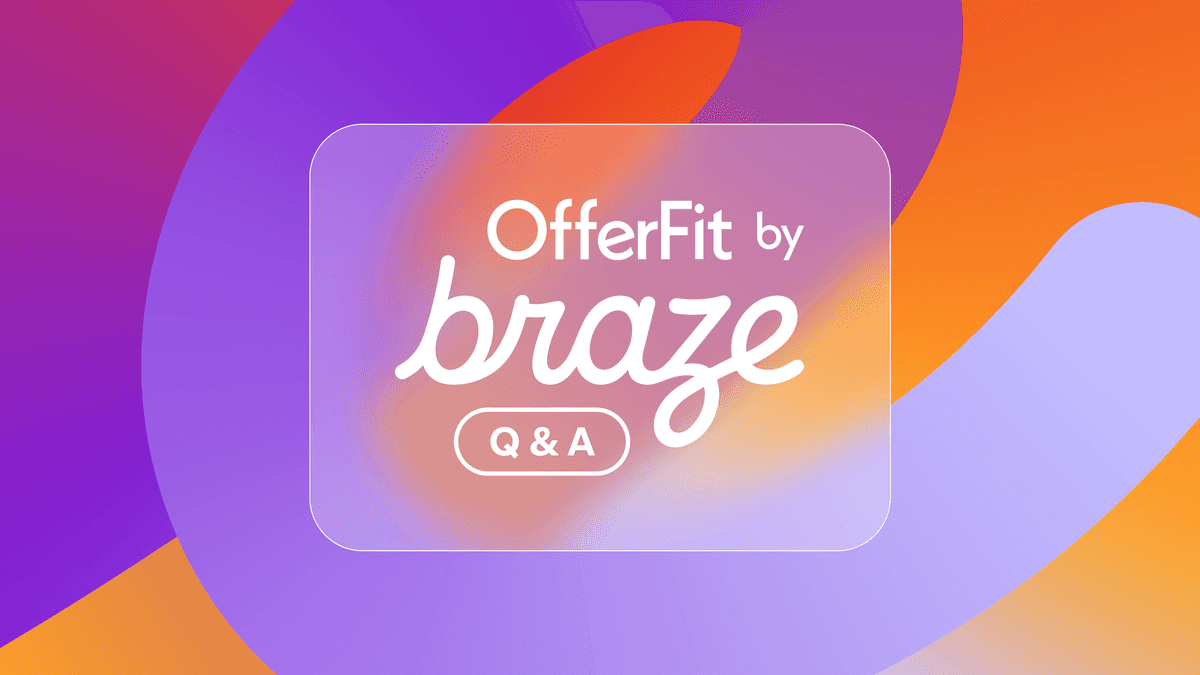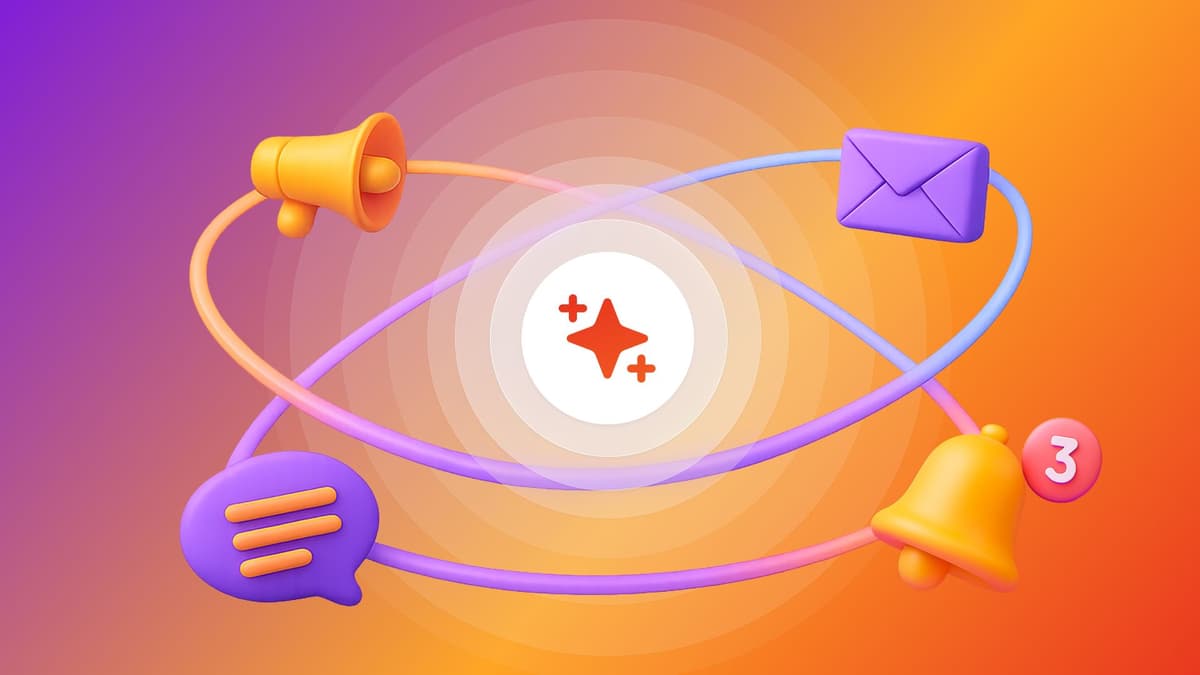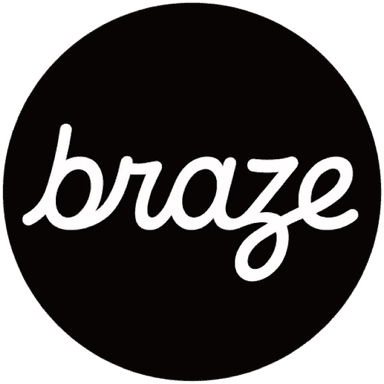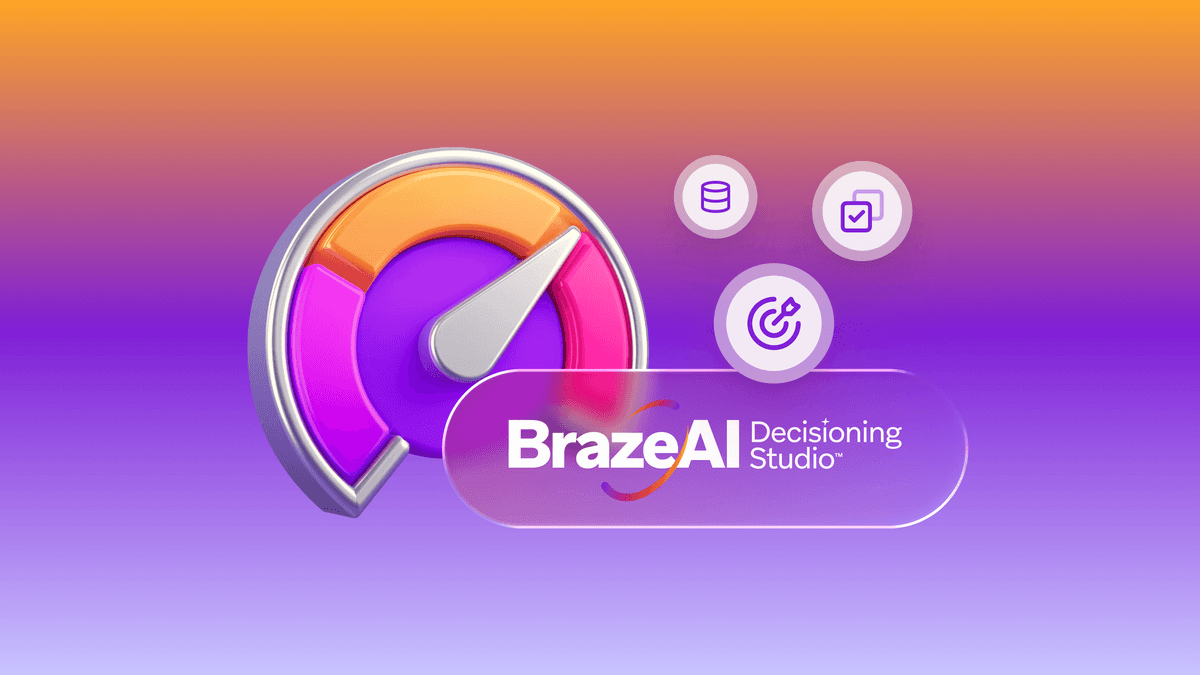Introducing OfferFit by Braze: Answering burning questions
Published on July 01, 2025/Last edited on July 01, 2025/7 min read


Matt Kreisher
Content Marketing Manager, BrazeAs a leading customer engagement platform, Braze sets the standard for brands to Be Absolutely Engaging™. From the beginning, Braze has believed in leading the new frontier of customer engagement technology. Our recent acquisition of the AI decisioning start-up OfferFit is our next chapter in that commitment.
On the heels of the acquisition, Braze VP of Product Marketing Kelsey Nelson interviewed OfferFit cofounder George Khachatryan for the webinar, How AI decisioning unlocks personalization at scale. With so many marketers in attendance, we had excellent, detailed questions about how AI decisioning works, how brands can get started, and how to track campaign analytics.
Here are a few highlights from the Q&A session:
QUESTION: Any advice on creating a compelling case for internal buy-in that shows the potential for AI decisioning?
There are two main components to consider when creating internal buy-in. First, AI decisioning is a cross-functional operation. It requires support from functions across the organization, and everyone will have different perspectives on what to do and how to do it. Bringing them together early and including everyone from the beginning will help all the stakeholders feel a sense of ownership.
The second aspect to consider is education. AI decisioning is complex, and everyone involved will need to learn the hows and whys to really understand the value of 1:1 personalization driven by reinforcement learning.
QUESTION: When choosing a winning outcome, the more variables there are, the more complexity there is. How is AI decisioning picking winners?
This is a really good question that requires a bit of context first. Reinforcement learning is a broad category with many subtypes, with the simplest being multi-armed bandits.
A multi-armed bandit is like a smart A/B test, which starts by choosing randomly from the options it’s given. As the agent learns, it progressively allocates traffic to the options that are performing best. Multi-armed bandits are simple and they don’t personalize, but it’s still better than A/B testing.
OfferFit’s AI decisioning relies on a more advanced type of reinforcement learning called contextual bandits. Instead of simply finding the overall winner like a multi-armed bandit, a contextual bandit finds the optimal choice for each individual. It can take into account hundreds of customer characteristics, and it learns the best action to take as a function of those characteristics. Then it progressively learns and optimizes. Even with a large set of variables, the contextual bandits are able to understand each customer and the options that perform best for that customer.
Here’s an example of how contextual bandits perform in the real world. OfferFit worked with one North American bank with over $10 billion in revenue to optimize business credit card referrals. Their marketing team knew that even a single new business account is incredibly valuable and an increase in conversions would translate into significant revenue gains. They’d already conducted extensive manual testing and worked with consultants to optimize their messaging.
But options that work best for the population as a whole don’t necessarily work for individual customers. For example, more frequent emails may mean more conversions, but they also increase unsubscribes. Contextual bandits learned which customers respond better to more frequent communication, allowing marketers to make 1:1 decisions. By leveraging reinforcement learning, marketers increased their conversion rate by 92% over the business as usual approach which resulted in $16 million in annualized value.
QUESTION: How are campaign analytics tracked if customers are receiving 1:1 communications?
AI decisioning gives multiple layers of insights. The first question we need to answer is “is it working?” In other words, what are the KPIs we’re trying to maximize and how are the agents working toward reaching those metrics?
To answer this question, we set up a randomized controlled trial. We then divide customers into two groups: A treatment group receiving personalized communications chosen by the AI decisioning agents and a control group receiving “business as usual” communications. We can then measure the uplift of the treatment group against the control group to see the impact on our top-level KPI.
Let’s say we want to maximize revenue with a goal to increase revenue off campaigns. We obviously want to know if we’re hitting that target, but then we also want to understand how revenue is tied to conversions, send times, channel settings, and more. Once we’ve established we’re seeing revenue uplift, there’s so much more we can understand and optimize.
QUESTION: How do you create and implement guardrails around AI decisioning within the action bank?
Guardrails are restrictions on which choices from the action bank an AI decisioning agent is allowed to make. For example, you might have a guardrail that says that if you're sending an email at a certain time of day, that can't happen on certain days of the week. Or maybe customers in a handful of states can’t receive a certain promotion. The guardrails would exclude them from marketing sends.
Think of a guardrail as a restriction on which actions can be chosen as a function of customer characteristics and other actions that you've chosen for that customer. Our AI Expert Services team helps marketers optimize the guardrails in a way that doesn’t compromise the performance of the AI agents.
QUESTION: Which industries or types of brands are best positioned to find success with OfferFit by Braze?
AI decisioning can be broadly implemented across industries. It’s not necessarily the industry that’s important so much as it is the lifecycle marketer’s business model that correlates with strong adoption. But companies with subscription models or a strong repurchase/replenishment cycle will see meaningful impact for the business with AI decisioning.
That’s why we’ve historically seen AI decisioning have a strong impact in industries like financial services, telecommunications, retail, restaurants, as well as media and entertainment. These are the industries with a financial incentive to invest their time and resources into building strong, personalized relationships with customers. Those continued relationships correlate to meaningful business impacts, which means marketers are laser-focused on optimizing every aspect of their customer campaigns.
QUESTION: How does AI decisioning behave with new customers or when brands have low data volume?
Obviously, the more customer data you have, the better you’ll be able to personalize every interaction. That said, even with limited data, you can still get a lot of value.
We have one customer in the restaurant industry who uses AI decisioning to encourage people to make their first three purchases through the loyalty program after that customer has downloaded the restaurant’s app. In those instances, you don’t have much information, but you have device data, geography, and maybe some zero-party survey data that indicates a customer’s culinary interests.
Marketers can also understand how customers are browsing the app, so they still have limited data points to start with. Once they make that first purchase, the AI starts to learn and the agent can already start learning and personalizing through the customer’s second purchase.
Obviously, the richer the data, the more juice you can squeeze. But don’t underestimate what can be done through even a handful of data points.
QUESTION: How do generative AI and AI decisioning work together?
There are two major bottlenecks standing in the way of true 1:1 personalization: Creative and experimentation. In order to send the right message to every individual, you need a large library of content. Of course even if you have this wonderful content library, marketers still need to learn which messages are best for every individual. And that requires experimentation.
AI decisioning solves the experimentation bottleneck while generative AI helps solve the content bottleneck. We think of them as complementary technologies.
One way you can see that is through Braze and the addition of generative AI into the customer engagement platform. Braze makes it easier for marketers to create more content, then there’s the OfferFit by Braze decisioning layer that allows marketers to autonomously send that content to the right customer.
Say a marketer needs five emails with five different CTAs, five different subject lines, and any number of options for body content. Generative AI is building out that content quickly while AI decisioning is using customer profiles, experimentation, and reinforcement learning to offer the most personalized experience for every customer even down to the send time and day of the week. Generative AI and AI decisioning work together to streamline every marketer’s process and drive better results.
The questions here only cover a small portion of what Kelsey and George covered. If you’re interested in the whole conversation, including an interview with Anthony O’Byrne from Kayo Sports on how one of Australia’s leading streaming brands achieves 1:1 personalization, watch the webinar replay today.
Related Tags
Be Absolutely Engaging.™
Sign up for regular updates from Braze.
Related Content
View the Blog
How AI Decisioning Transforms Marketing (A Complete Guide)

Team Braze

AI decisioning cheat sheet: How to crawl/walk/run with BrazeAI Decisioning Studioᵀᴹ

Team Braze

A day in the life of a data scientist on the BrazeAIᵀᴹ forward-deployed engineering team
